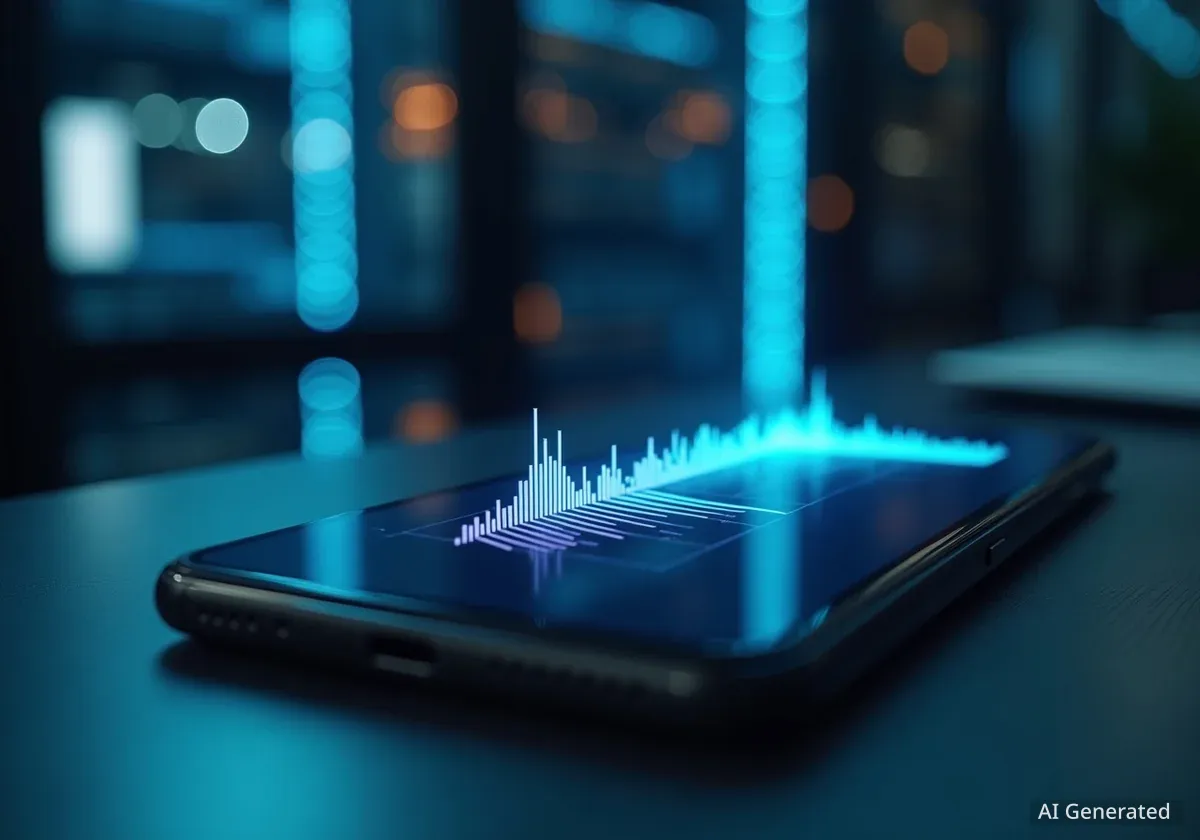Artificial intelligence is fundamentally changing how organizations approach cybersecurity, moving beyond basic threat detection to more sophisticated and proactive defense strategies. AI-powered systems can now analyze vast amounts of data to identify and respond to threats in real-time, constantly learning and adapting to new attack methods.
Key Takeaways
- Predictive AI: This technology anticipates cyberattacks by analyzing internet data to identify malicious infrastructure before an attack is launched.
- Generative Adversarial Networks (GANs): AI models train against each other to simulate and defend against novel, previously unseen cyber threats.
- AI Analyst Assistants: Generative AI automates the initial investigation of security alerts, providing human analysts with concise summaries to speed up response times.
- Behavioral Anomaly Detection: AI establishes a baseline of normal system activity and flags even minor deviations, catching threats that rule-based systems might miss.
- Automated Alert Triage: AI systems can investigate every single security alert, a task often impossible for human teams, to determine which threats are genuine.
- Proactive Deception: Advanced AI creates realistic decoy network environments to confuse, trap, and study attackers, shifting the defense from reactive to proactive.
1. Predictive AI for Proactive Defense
One of the most significant shifts in cybersecurity is the move from reaction to prevention. Predictive AI enables security teams to make defensive moves before an incident even occurs. This technology can even automate responses to anticipated threats.
According to Andre Piazza, a security strategist at BforeAI, this approach enhances productivity for security teams that are often overwhelmed by a high volume of alerts and false positives. "Running at high accuracy rates, this technology can enhance productivity for security teams challenged by the number of alerts, the false positives contained, and the burden of processing it all,” Piazza says.
Predictive AI works by ingesting massive quantities of internet data and metadata. It uses a machine learning technique known as a random forest to analyze this data and make predictions. The system relies on a foundational dataset of validated good and bad infrastructures, often called the "ground truth," which serves as a standard for its predictions.
How It Stays Accurate
To remain effective, the AI model must constantly adapt. It continuously updates its ground truth to account for changes in the attack surface, such as new IP addresses or DNS records, and to recognize novel attack techniques developed by cybercriminals. This continuous learning process is what ensures the predictions remain accurate over time.
2. Generative Adversarial Networks to Simulate Threats
Generative Adversarial Networks, or GANs, offer a unique way to prepare for future attacks by creating them in a controlled environment. This technique allows a cybersecurity system to learn and adapt by training against a vast number of simulated threats that have never been seen before.
Michel Sahyoun, chief solutions architect at NopalCyber, explains that GANs help close the gap between attacker innovation and defensive readiness. "By simulating attacks that haven’t yet occurred, adversarial AI helps proactively prepare for emerging threats," Sahyoun notes.
A GAN is composed of two main parts: a generator and a discriminator. The generator's job is to create realistic cyberattack scenarios, such as new malware types or phishing emails, by imitating real attacker tactics. The discriminator then evaluates these scenarios to distinguish between malicious and legitimate activity.
"The generator refines its attack simulations based on the discriminator’s assessments, while the discriminator continuously improves its ability to detect increasingly sophisticated threats.” - Michel Sahyoun, NopalCyber
This dynamic creates a feedback loop where both components become progressively smarter, preparing the defense system for a wide range of potential attacks.
3. The AI Analyst Assistant
Generative AI is also being used to augment human security teams by acting as an intelligent assistant. Companies like Hughes Network Systems are using AI to automate the time-consuming process of threat triage, elevating the work of security analysts.
Ajith Edakandi, cybersecurity product lead at Hughes Enterprise, clarifies that the AI is not a replacement for humans. Instead, it is "an intelligent assistant that performs much of the initial investigative groundwork.” The AI engine monitors security alerts, gathers data from various sources, and creates contextual summaries that would otherwise require significant manual work.
This process dramatically improves the efficiency of a security operations center (SOC). An analyst receiving an AI-generated summary can focus on validating the threat and responding, rather than spending time on data collection. Edakandi states that this reduces investigation time from nearly an hour to just a few minutes.
Streamlining Investigations
The AI is trained on established analyst playbooks and runbooks, allowing it to mimic the steps a human would take. When an alert comes in, the AI pulls data from trusted sources, correlates the information, and synthesizes a complete threat narrative for the human analyst to review.
4. Detecting Micro-Deviations in Behavior
Traditional security systems often look for known malicious behaviors. A more advanced AI approach involves establishing a baseline of normal system behavior and then identifying any slight deviations from that norm.
Steve Tcherchian, CEO of XYPRO Technology, explains that this method allows AI to detect anomalies that humans or rule-based systems would miss. "Instead of chasing known bad behaviors, the AI continuously learns what ‘good’ looks like at the system, user, network, and process levels,” he says.
The AI models are fed real-time data, including process logs, network flows, and authentication patterns, to continuously train on what constitutes normal activity. When a deviation occurs—such as a user logging in from an unusual location or at an odd time—a risk signal is triggered. Over time, the model becomes more precise as it identifies more of these signals.
5. Automating Alert Investigation and Response
Security teams in mid-sized to large companies face a constant flood of alerts. Kumar Saurabh, CEO of AirMDR, notes that a company with 1,000 employees can receive 200 alerts a day. Investigating each one thoroughly is often impossible for a human team.
"To thoroughly investigate an alert, it takes a human analyst at best 20 minutes. Therefore, most alerts are ignored or not investigated thoroughly.” - Kumar Saurabh, AirMDR
AI analyst technology addresses this problem by examining every single alert. The AI determines what additional data is needed to make an accurate decision, gathers it from other tools in the company's security stack, and decides whether the alert is benign or serious. If malicious activity is confirmed, the AI can recommend or execute remediation actions and notify the security team.
6. Proactive Generative Deception
Perhaps one of the most innovative uses of AI in cybersecurity is proactive generative deception. This technique involves using AI to create and deploy highly realistic but fake network segments, data, and user behaviors to mislead attackers.
Gyan Chawdhary, CEO of Kontra, describes this as building an "ever-evolving digital funhouse for attackers." This strategy goes far beyond traditional honeypots by making the deception more intelligent, adaptive, and widespread throughout the network.
This approach fundamentally shifts the power dynamic. "Instead of constantly reacting to new threats, we force attackers to react to our AI-generated illusions,” Chawdhary explains. This increases the cost and effort for attackers, who waste resources on decoy systems. It also provides defenders with valuable time and intelligence on the attackers' methods as they interact with the deceptive environment.
Resource Requirements
Implementing a proactive generative deception system is a significant undertaking. According to Chawdhary, it requires a robust cloud infrastructure, powerful GPUs for AI model training, and a highly skilled team of AI engineers and cybersecurity architects. Access to extensive datasets of both benign and malicious traffic is also essential to create convincing deceptions.





